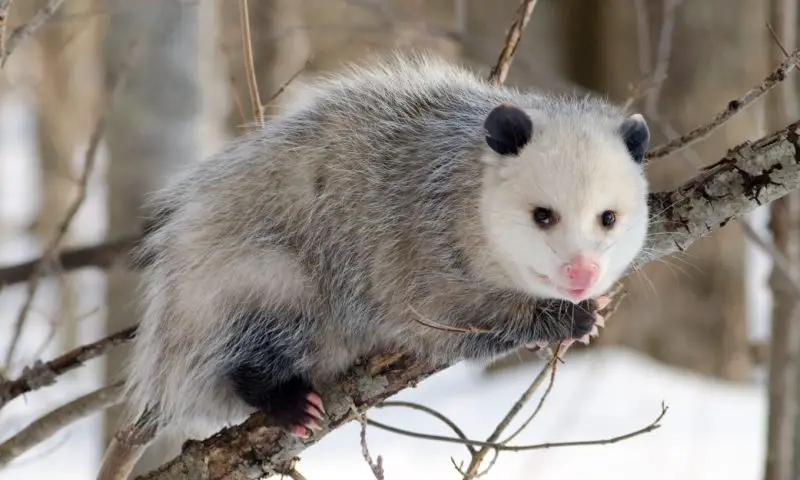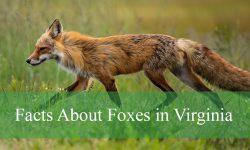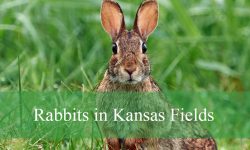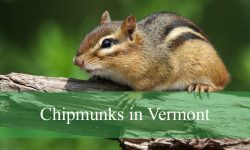In the quiet woods, winding backroads, and suburban backyards of North Carolina, a soft rustle in the underbrush often goes unnoticed. A pale shape glides across the night, its beady eyes shining in a flashlight beam, its prehensile tail curled for balance. This ghostly wanderer is the Virginia opossum — North America’s only native marsupial, and one of the state’s most misunderstood creatures.
While many see them as nuisances or scavengers, opossums in North Carolina lead remarkable lives filled with survival ingenuity, ecological importance, and surprising intelligence. Beneath their timid appearance lies a mammal perfectly adapted to coexist with humans and wilderness alike.
In this article, we’ll uncover the hidden truths about North Carolina’s opossums — their habits, diet, survival tactics, and ecological role — and why these quiet, nocturnal marsupials are essential to the state’s balance of life.
Meet the Virginia Opossum

North Carolina’s Native Marsupial
The Virginia opossum (Didelphis virginiana) is the only marsupial found north of Mexico. With its silver-gray fur, pointed snout, and hairless tail, it may not win beauty contests, but its evolutionary design tells a story of resilience stretching back over 70 million years.
Adults typically measure 24 to 36 inches long, including the tail, and weigh between 4 to 12 pounds. Males, or jacks, are larger than females, known as jills. Despite their fragile look, opossums are incredibly hardy — capable climbers, swimmers, and scavengers that adapt to nearly any environment.
From the Appalachian foothills to the coastal plains, North Carolina opossums roam forests, wetlands, and neighborhoods alike, thriving wherever food and shelter exist.
A Survivor From the Age of Dinosaurs
Scientists consider the Virginia opossum a living fossil — a survivor from ancient times when marsupials roamed alongside dinosaurs. Its reproductive system, featuring a pouch like kangaroos, sets it apart from all other North American mammals.
Their primitive traits, from opposable thumbs to sharp teeth suited for omnivory, have helped them outlast species far larger and stronger. The fact that they still thrive across North Carolina’s changing landscapes is a testament to their evolutionary brilliance.
Habitat and Range in North Carolina
The Wanderers of Every Landscape
Opossums in North Carolina occupy nearly every ecosystem, from pine forests to urban alleyways. They prefer wooded areas near water sources — creeks, ponds, and wetlands — but their adaptability allows them to thrive near human settlements.
They make temporary dens in hollow trees, brush piles, rock crevices, and even abandoned burrows of other animals. Around homes, they may seek refuge beneath decks, sheds, or old barns. Unlike territorial mammals, opossums rarely defend specific areas; they wander nightly in search of food and shelter, seldom sleeping in the same place twice.
The Nomadic Lifestyle
Their nomadic habits help them avoid predators and parasites. While some mammals fiercely guard home territories, the opossum’s wandering nature allows it to follow seasonal food availability — fruits in summer, insects and carrion in warmer months, and stored food scraps in winter.
This flexibility has made the Virginia opossum one of the few wild mammals equally at home in rural forests and suburban streets across the state.
The Secret Life of an Opossum
Nocturnal Navigators
Opossums are creatures of the night. With their keen sense of smell and whisker sensitivity, they navigate dark environments with precision. Their large eyes reflect light, allowing better night vision, while their furless tails and opposable thumbs on hind feet help them balance and climb trees.
Despite their slow, awkward walk, opossums are agile climbers. They use their tails to grip branches and stabilize themselves when reaching for food. In dense forests of western North Carolina, they’re often seen gliding from tree to tree, searching for fruit, insects, and bird eggs.
The Art of Playing Dead
When threatened, opossums in North Carolina employ one of nature’s most famous defense tactics — “playing possum.” Involuntary rather than intentional, this state of thanatosis makes them appear dead: the body stiffens, breathing slows, the mouth gapes, and a foul odor is released to deter predators.
This behavior can last from minutes to hours until danger passes. Predators, fooled into thinking the opossum is dead or diseased, often lose interest. Few defense mechanisms in the animal kingdom are as strange yet effective.
Diet: Nature’s Cleanup Crew
Omnivorous and Opportunistic
The Virginia opossum is the ultimate opportunist, eating nearly anything available. Their diet includes fruits, nuts, insects, small animals, carrion, and even leftover pet food or garbage. In North Carolina’s diverse ecosystems, this adaptability makes them invaluable scavengers.
They consume fallen fruit in orchards, beetles from forest floors, ticks from deer trails, and roadkill that might otherwise attract disease. By cleaning up carrion and controlling insect populations, opossums silently perform one of nature’s most essential sanitation services.
The Tick Terminators
One of the hidden secrets about opossums is their extraordinary appetite for ticks. Studies show that a single opossum can consume over 5,000 ticks per season, dramatically reducing tick populations and the spread of Lyme disease.
This natural pest control role makes them unsung heroes of North Carolina’s backyards and woodlands. Unlike many mammals, opossums groom meticulously, removing parasites as they go — keeping ecosystems cleaner and healthier for other animals.
Reproduction and Family Life
The Miracle of the Pouch
As marsupials, opossums give birth to extremely underdeveloped young — each the size of a honeybee. After a gestation period of only 13 days, up to 20 tiny newborns crawl into the mother’s pouch, where they attach to teats and continue developing for about two months.
Only a few survive, as there are typically fewer nipples than offspring. Once they outgrow the pouch, the young ride on the mother’s back, clinging to her fur as she forages. This iconic image — a mother opossum carrying a squirming litter — reflects the endurance and care hidden beneath her shy demeanor.
Growing Up Wild
By the time they are three months old, juvenile opossums venture off alone, fully independent. Few survive their first year due to predation and road hazards, but those that do quickly learn to navigate their environment with remarkable adaptability.
In favorable conditions, a Virginia opossum may live up to three years in the wild — a short life, yet long enough to produce several litters and maintain population balance across the state.
Survival Secrets and Adaptations
Immune to Venom and Disease
One of the most surprising facts about opossums in North Carolina is their partial immunity to venomous snake bites. They produce a protein called Lethal Toxin Neutralizing Factor (LTNF) that protects them from toxins produced by snakes like copperheads and rattlesnakes.
They are also highly resistant to rabies, thanks to their low body temperature, which prevents the virus from thriving. These biological advantages give opossums a resilience unmatched by most small mammals.
Cold and Heat Resilience
Though they lack thick fur, opossums adapt well to North Carolina’s varied climate. In colder regions, they grow dense winter coats and seek insulated shelters. In the state’s humid summers, they stay active at night, conserving water and avoiding heat stress.
Their ability to thrive from coastal plains to mountain forests makes them one of the most climate-tolerant mammals in the Southeast.
Opossums and the North Carolina Ecosystem
Unsung Ecological Heroes
Every opossum in North Carolina plays a vital role in the food web. By consuming carrion, insects, and small pests, they prevent disease spread and balance populations. Their foraging habits also disperse seeds, helping regenerate native plant life after feeding on fruits and berries.
Meanwhile, they serve as prey for larger predators like owls, coyotes, and bobcats, sustaining the natural cycle of energy transfer in North Carolina’s forests.
Partners in Balance
Because they feed on decomposing matter and pests, opossums indirectly protect crops, gardens, and even human health. Their nocturnal lifestyle keeps them out of direct competition with diurnal species, allowing ecosystems to function smoothly without conflict.
Their presence in both wild and suburban settings signifies balance — a harmony between old forests and human expansion that few wild mammals maintain so gracefully.
Myths and Misunderstandings
The Fear of the Unknown
Despite their benefits, Virginia opossums often suffer from negative reputations. Many people mistake their defensive hissing for aggression or fear their scavenging habits. In reality, opossums rarely attack and prefer to flee or feign death.
They do not spread rabies, rarely damage property, and actually help control pests. Their awkward gait and eerie appearance have long fed folklore — yet these traits mask gentle, intelligent animals performing vital work for the environment.
Smarter Than They Look
Opossums possess problem-solving skills on par with rats and cats. Experiments have shown they can remember food locations for months and navigate mazes efficiently. Their intelligence helps them adapt to suburban life, finding shelter and food in human environments without causing significant harm.
They are, in many ways, the quiet intellectuals of the night — clever survivors thriving in plain sight.
Opossums and Humans in North Carolina
Encounters in Backyards and Farms
Most North Carolinians encounter opossums around trash bins, compost piles, or gardens. These nocturnal visitors might look messy, but they’re cleaning up waste and controlling pests like slugs, snakes, and mice.
Farmers benefit from their appetite for crop-eating insects, while suburban homeowners unknowingly enjoy pest-free gardens thanks to these nighttime cleaners. Their coexistence with humans reflects their adaptability — one of the key hidden facts about opossums that most people overlook.
Living Peacefully With Opossums
If opossums become frequent visitors, there’s little reason for alarm. Securing trash lids, removing pet food at night, and sealing under-deck spaces prevent unwanted denning. Poison or traps are unnecessary and harmful to ecosystems.
Instead, encouraging natural habitats — brush piles, native shrubs, and water sources — helps opossums live safely without conflict. They repay this hospitality tenfold by cleaning and protecting their shared environment.
Conservation and Population Status
Abundant but Important
The Virginia opossum is abundant across North Carolina and not considered threatened. However, many die prematurely due to vehicle collisions and habitat loss. As roads expand and forests fragment, their wandering nature places them at risk.
Conservationists stress the importance of wildlife crossings, habitat connectivity, and public education to reduce unnecessary deaths and maintain ecological balance.
Opossums as Environmental Indicators
Because they feed across multiple trophic levels, opossums reflect the health of North Carolina’s ecosystems. A stable opossum population suggests balanced prey and predator dynamics. Monitoring their numbers helps biologists track environmental changes and urban expansion impacts.
In this way, the humble opossum becomes both a guardian and a gauge of the natural world’s well-being.
Surprising and Little-Known Facts About Opossums in North Carolina
-
Opossums have 50 teeth, more than any other North American mammal.
-
Their tails can grasp objects, though they cannot hang indefinitely.
-
They groom meticulously, removing parasites and dirt daily.
-
Female opossums can carry up to 13 young at once.
-
They are immune to most snake venoms, including copperheads.
-
Opossums consume over 5,000 ticks per season.
-
Their body temperature averages just 94°F, limiting rabies infection.
-
They can climb vertical surfaces using opposable thumbs on hind feet.
-
Opossums rarely get frostbite thanks to fat reserves and fur adaptation.
-
They are among the oldest surviving mammal lineages in North America.
FAQs About Opossums in North Carolina
Do opossums hibernate during winter?
No, opossums remain active year-round but reduce movement during extreme cold.
Are opossums dangerous to pets or humans?
No, they are shy and non-aggressive, preferring to flee or play dead when threatened.
What do opossums eat most in North Carolina?
They eat fruits, insects, carrion, and pests like ticks, mice, and snails.
Why do opossums play dead?
It’s an involuntary defense mechanism that tricks predators into losing interest.
Do opossums spread rabies?
Almost never. Their low body temperature makes them highly resistant to the virus.
Can I keep an opossum as a pet in North Carolina?
It’s illegal to keep native wildlife as pets. Licensed rehabilitators handle injured or orphaned opossums.
How long do opossums live?
Typically 2–3 years in the wild due to predators and vehicles, though they can live longer in captivity.
Are opossums beneficial to gardens?
Absolutely. They eat slugs, insects, and even venomous snakes, reducing pests naturally.
What should I do if I find an injured opossum?
Contact a local wildlife rehabilitator or animal control. Do not attempt to handle it directly.
Are opossums protected under state law?
While not endangered, they are protected as native wildlife; unnecessary killing is discouraged.
Final Thoughts
The opossums of North Carolina are living examples of nature’s quiet genius — survivors, scavengers, and caretakers of the land. Behind their eerie grin and midnight wanderings lies a creature deeply woven into the state’s ecology.
They clean what others leave behind, reduce pests, recycle nutrients, and sustain predators. Far from being pests themselves, opossums remind us that even the most overlooked animals play irreplaceable roles in keeping North Carolina’s wild spaces alive.
So the next time you spot a gray shape crossing your yard under the moonlight, pause — you’re witnessing one of the oldest, most misunderstood, and most essential mammals in the South. The truth is simple: opossums in North Carolina are not just survivors — they are silent guardians of the night.






